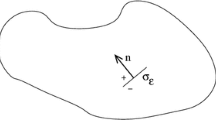Abstract
In this paper we prove that all high order non-biased spatial intensity derivative operators in images can be computed using linear combinations of separable filters. The separable filters are the same as those used by Haralick (1984), but different linear combinations are taken. A comparison of the number of operations necessary to compute the derivatives using separable and non-separable filters is made. The conclusion of our analysis is that the optimal way to compute the needed derivatives depends on which derivatives we have to compute, on the size of the window and on the order of expansion. Finally, we discuss the performance of an edge detector using these derivatives for unsmoothed and smoothed step edges.
Similar content being viewed by others
References
Beckmann, P. 1973.Orthogonal Polynomials for Engineers and Physicists, Boulder, CO:Golem.
Bergholm, F. 1993. On Velocity Estimation and MeanSquare Error. InProc. 8th Scand. Conf. on Image Analysis, Tromso, Norway, pp. 1093–1100.
Canny, J. 1986. A computational approach to edge detection.IEEE Trans. Pattern Anal. Mach. Intell. 8:679–698.
Clark, J.J. 1989. Authenticating edges produced by zero-crossing algorithms.IEEE Trans. Pattern Anal. Mach. Intell. 11:43–57.
Deriche, R. 1990. Fast Algorithms for Low-Level Vision.IEEE Trans. Pattern Anal. Mach. Intell. 12:78–87.
De Vriendt, J. 1993. Accuracy of the Zero Crossings of the Second Directional Derivative Edge Detector.Multidimensional Systems and Signal Processing 4:227–251.
Grimson, W.E.L., and Hildreth, E.C., 1985. Comments on “Digital Step Edges from Zero Crossing of Second Directional Derivatives”.IEEE Trans. Pattern Anal. Mach. Intell 7:121–127.
Haralick, R.A. 1984. Digital Step Edges from Zero Crossing of Second Directional Derivatives.IEEE Trans. Pattern Anal. Mach. Intell. 6:58–68.
Haralick, R.A. 1985. Author's Reply.IEEE Trans. Pattern Anal. Mach. Intell. 7:127–129.
Sarkar, S., and Boyer, K.L. 1991a. Optimal Infinite Impulse Response Zero Crossing Based Edge Detectors.Comput. Vision, Graphics, Image Processing 54:224–243.
Sarkar, S., and Boyer, K. L. 1991b. On Optimal Infinite Impulse Response Edge Detection Filters.IEEE Trans. Pattern Anal. Mach. Intell. 13:1154–1171.
Vieville, T., and Faugeras, D., 1992. Robust and fast computation of unbiased intensity derivatives in images.Proc. 2nd European Conference on Computer Vision, Lecture notes in Computer Science 588:203–211. Springer-Verlag: Berlin, Heidelberg, New York.
Author information
Authors and Affiliations
Additional information
This work was supported by the Belgian National Fund for Scientific Research (NFWO).
Rights and permissions
About this article
Cite this article
De Vriendt, J. Fast computation of unbiased intensity derivatives in images using separable filters. Int J Comput Vision 13, 259–269 (1994). https://doi.org/10.1007/BF02028348
Received:
Revised:
Accepted:
Issue Date:
DOI: https://doi.org/10.1007/BF02028348




